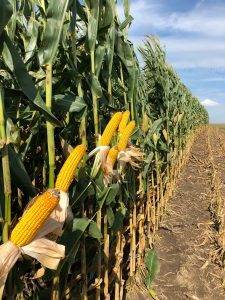 Product team members at Latham Hi‑Tech Seeds continually search for new products to help our lineup perform better in your fields. We look at our MiniStrip trials to document the early season environmental issues at each location, so we can better understand harvest results. While we learn about new products in these plots, we also look for indicators to help us provide better positioning statements on key hybrids in our lineup.
Product team members at Latham Hi‑Tech Seeds continually search for new products to help our lineup perform better in your fields. We look at our MiniStrip trials to document the early season environmental issues at each location, so we can better understand harvest results. While we learn about new products in these plots, we also look for indicators to help us provide better positioning statements on key hybrids in our lineup.
Each season offers new challenges and opportunities for us to learn more to help better position products in your fields. Like many of your fields, some of our MiniStrip plot locations were planted in cooler soils this spring and endured the very cold temperatures over Mother’s Day weekend. We are watching hybrid reactions to those environmental conditions.
Soon we will evaluate seed products on flower date. With the abundance of pollen during flowering in a commercial corn field, we generally do not get concerned about pollen viability. We watch for stresses on the plant that may cause issues with proper silking. We also look for differences between hybrids that are close in maturity, so that we can make sound recommendations on which hybrids to pair together that are similar in maturity but offer variation on pollination/silking timing.
Pairing hybrids in a field with varying pollination windows spreads risk of cool weather, super high temperatures or drought. It is uncommon for us to see issues with pollination but pairing complimentary hybrids in the same field offers protection in seasons of extreme stress. July also is when we look for early onset of diseases. We evaluate for disease tolerance and for benefits we may see from in-season fungicide applications. The continual evaluation of what we see in our plots helps us fine tune the hybrid characteristic information on our tech sheets. We look forward to sharing any important findings from our summer research this fall. Watch for more details coming soon!
